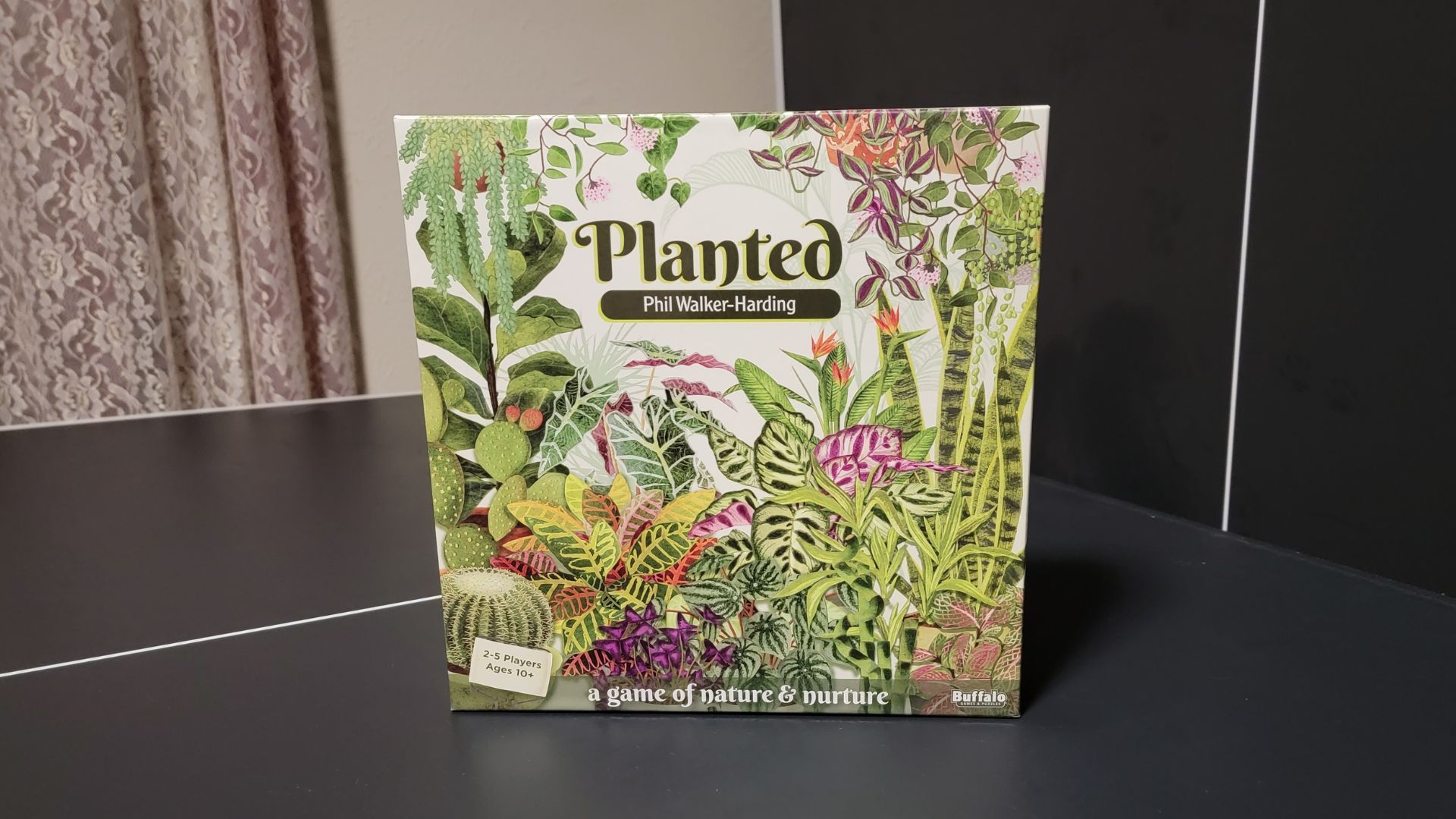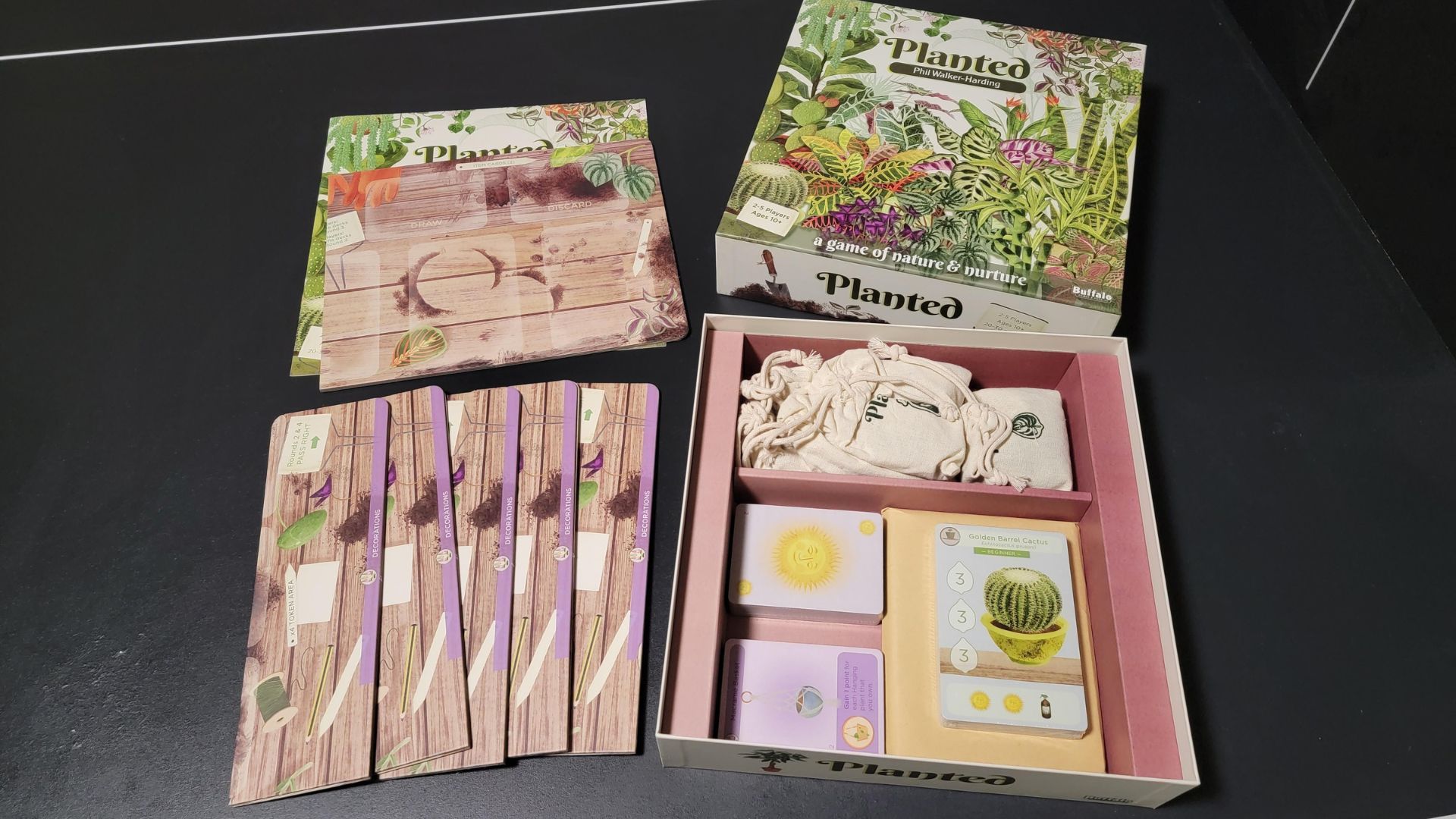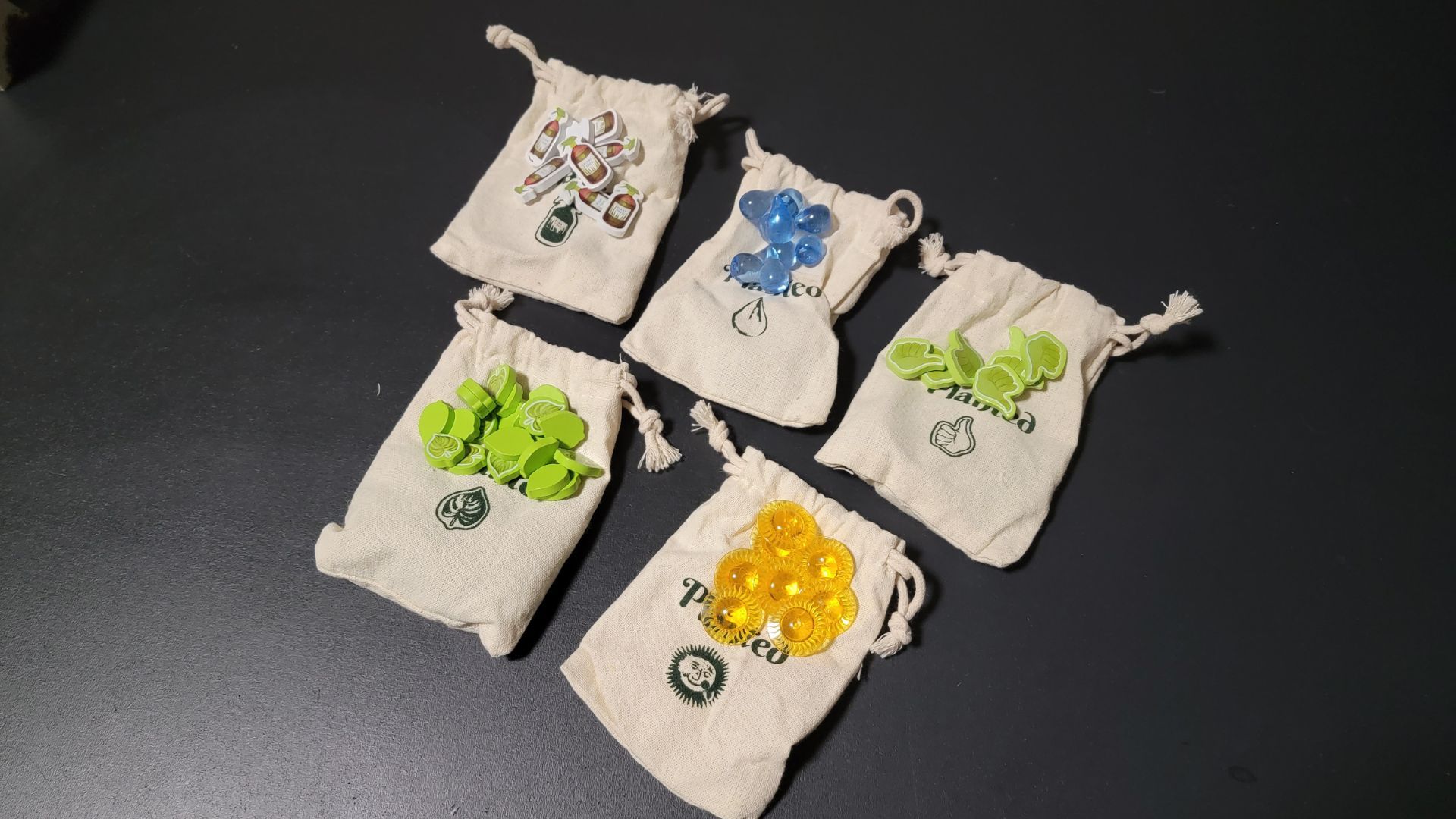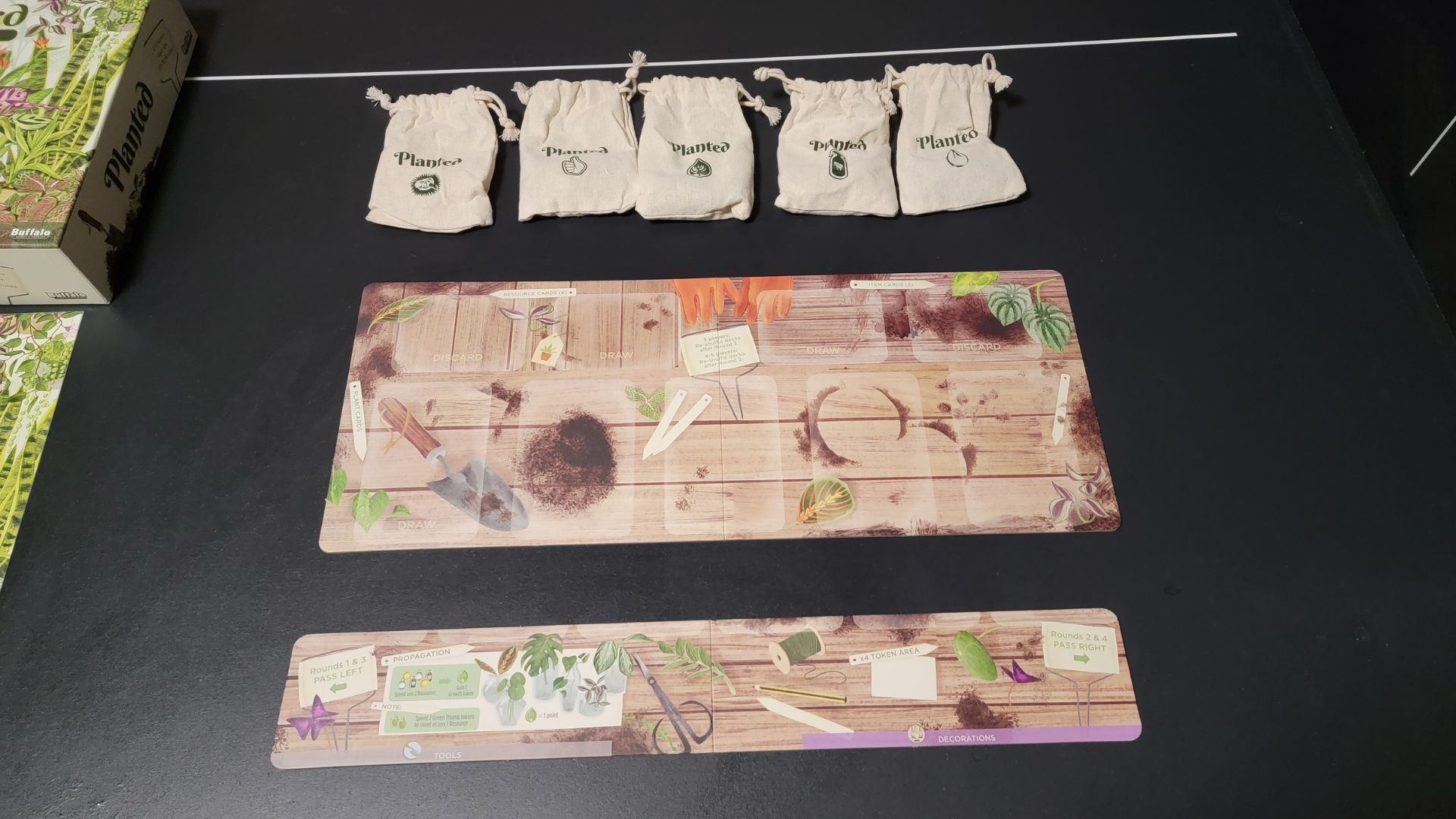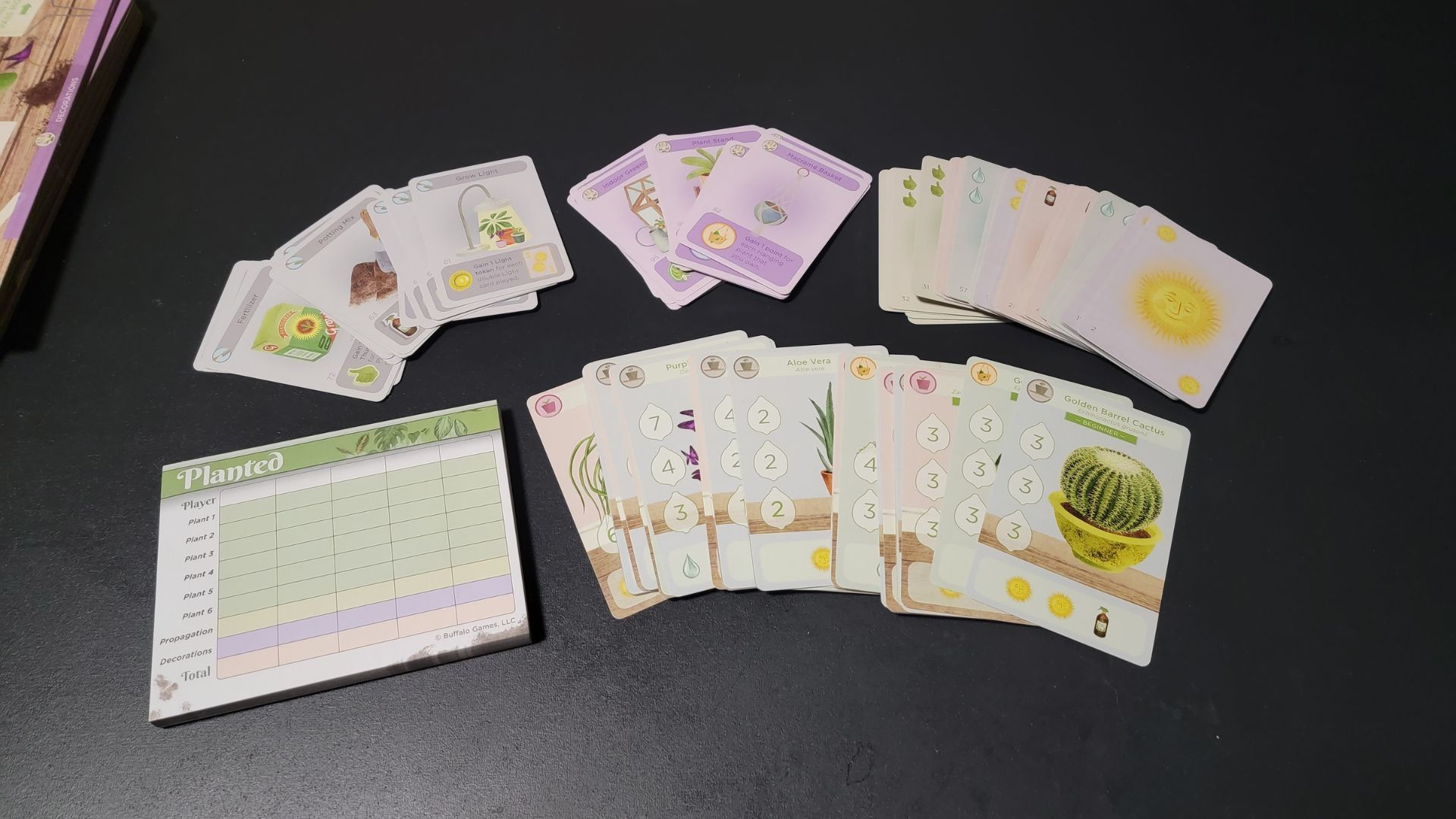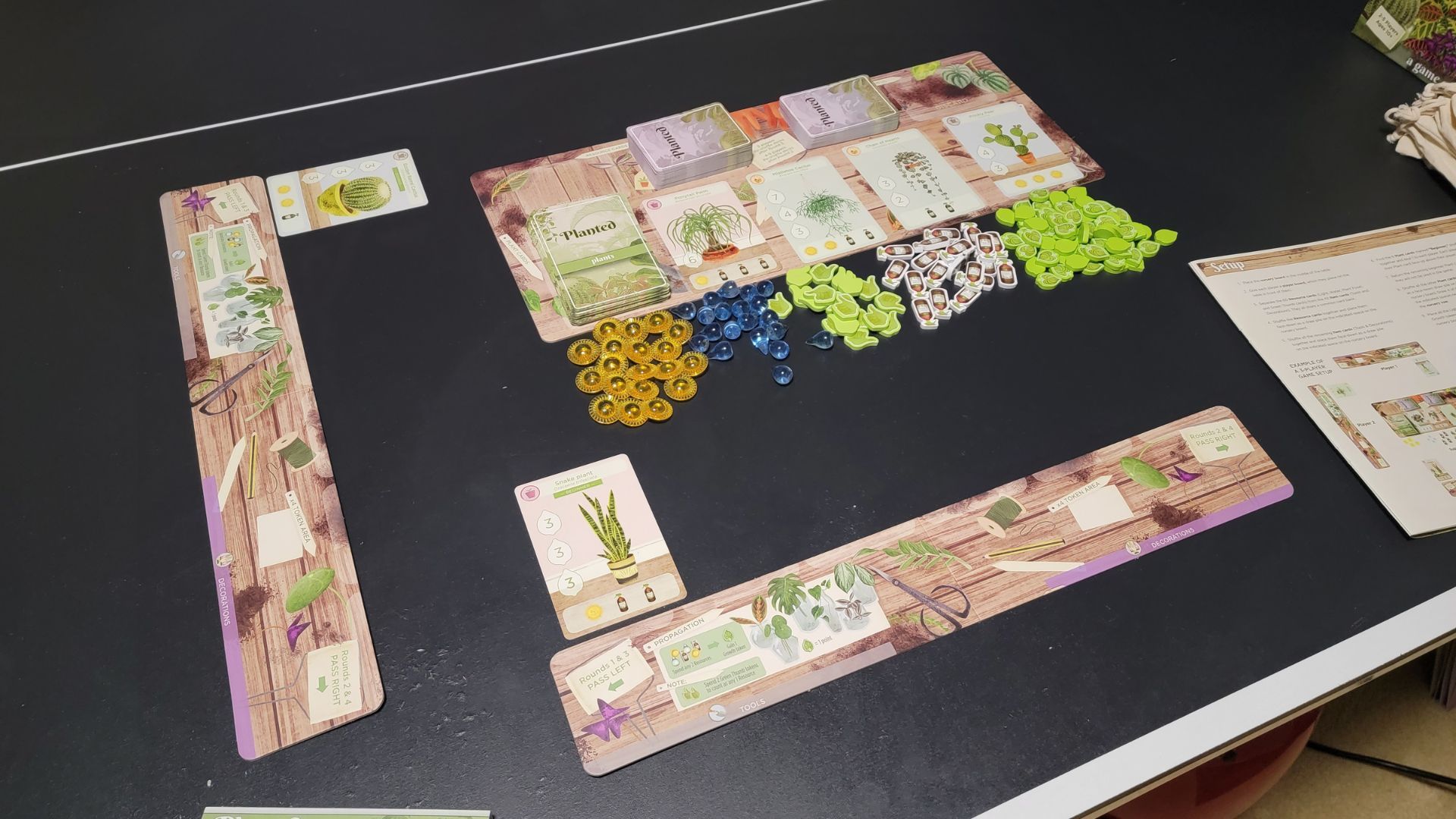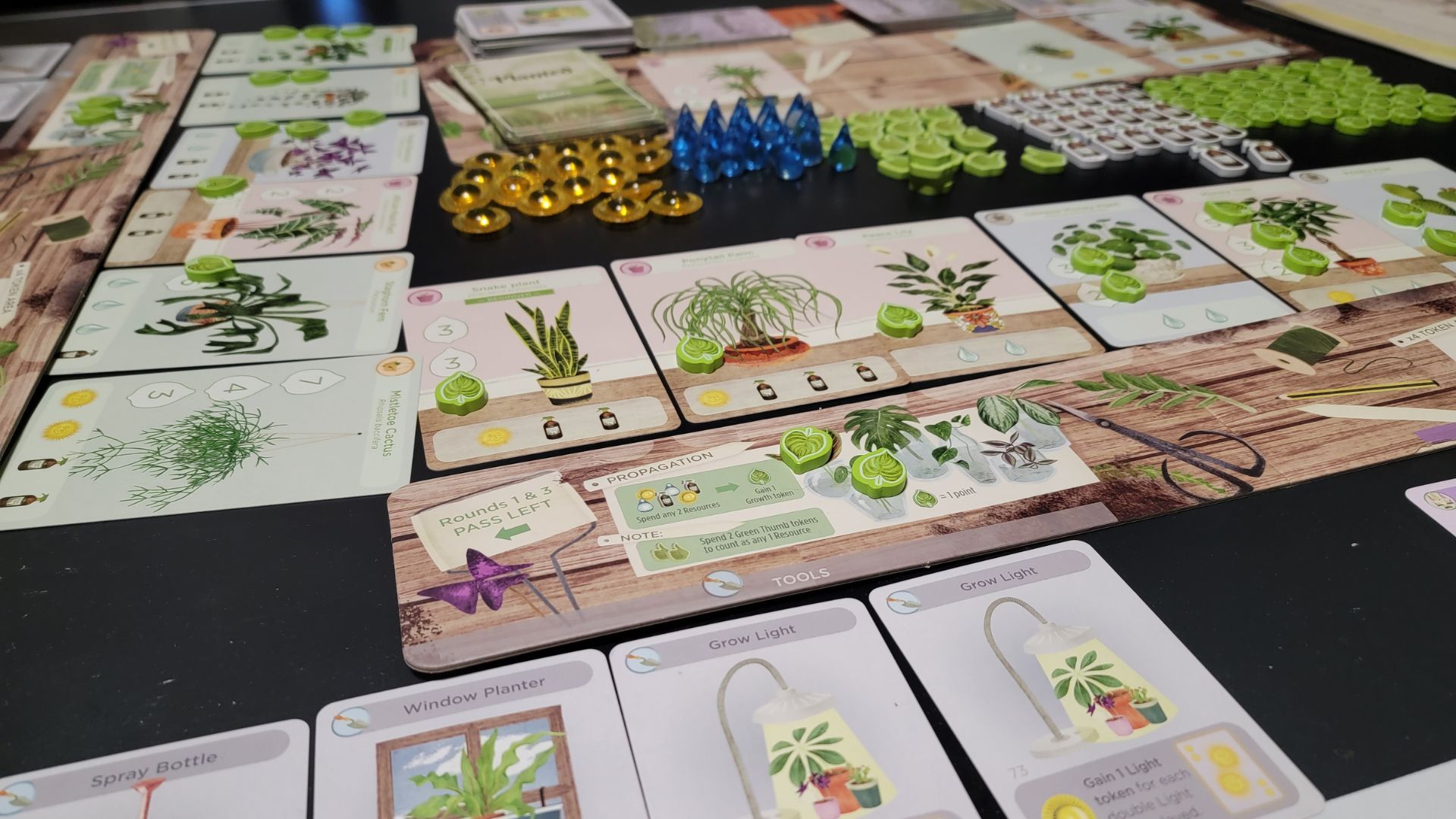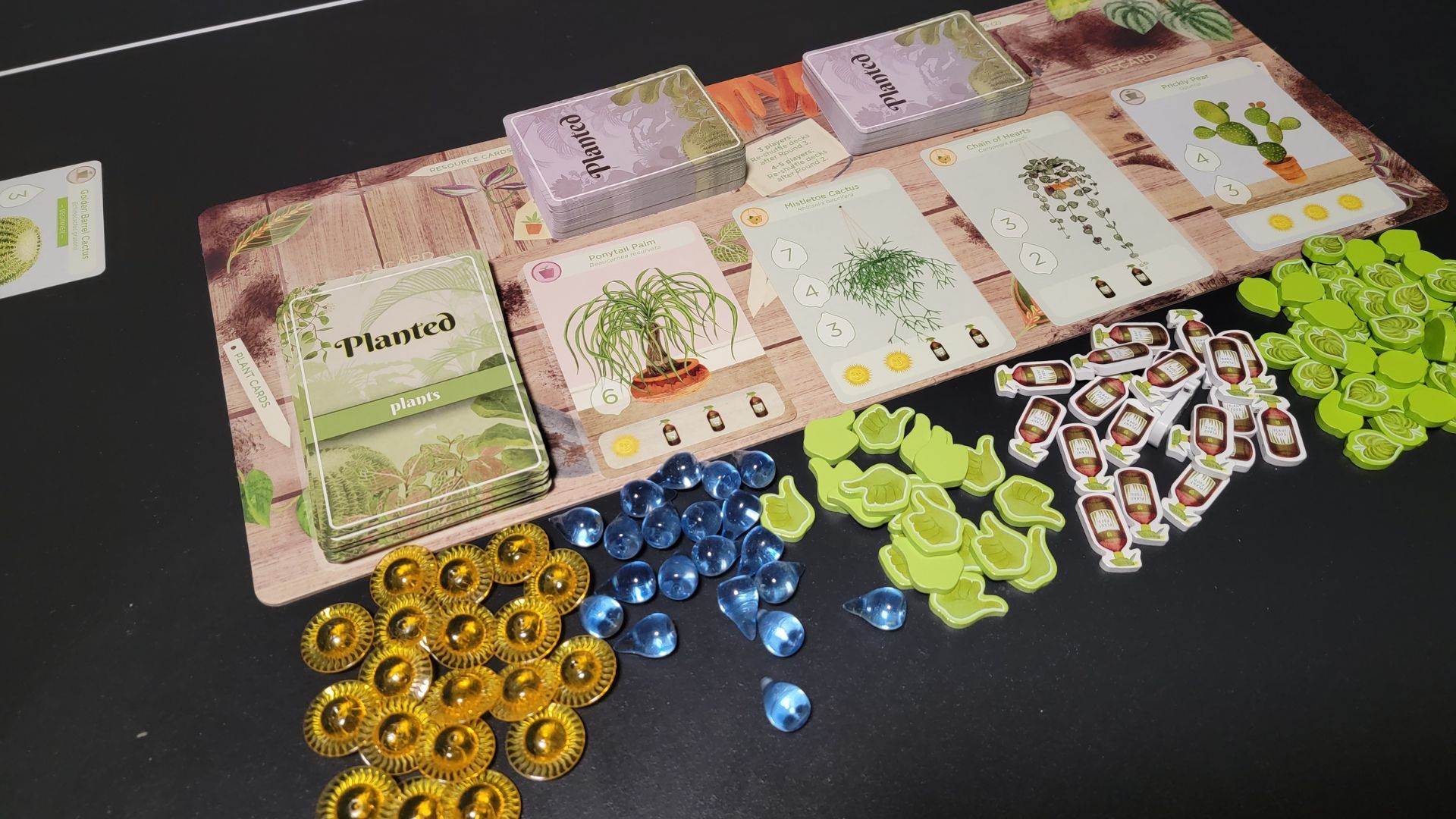Quick Links
Key Takeaways
First off, this game looks gorgeous. More importantly, it’s super easy to learn and loads of fun to play with two to five people.

Sometimes you want an incredibly involved board game that employs multiple strategies and moving pieces. Other times, you just want a simple game that's easy to play while you're talking with friends or family. Planted is the latter.
There are certainly strategic elements to Planted that can help you win the game, but it's not nearly as involved as Star Wars Villainous or Funkoverse: Squid Game. Put in the simplest terms, Planted is a card drafting game where you pass your hand around and collect what you need. This board game is mechanically similar to Sushi Go!, and both games are actually created by the same person, Phil Walker-Harding.
The artwork was the first thing I loved about Planted, but as I played the game, I found even more to enjoy. However, the game isn't perfect, and might even be deemed as too simple depending on what kind of board game you're looking for. Without further ado, let's get into all the details, starting with the actual quality of the board game.
Design & Pieces
The overall design of Planted is earthy and beautiful. All of the game artwork is by Hannah Bailey, and if you're a lover of plants, you'll be captivated by the box art right away. The Plant cards and Resource cards inside stick with the pastel aesthetic, and most of the cards have some element of green in its artwork.
Once you unbox Planted, there's a main board, five individual player boards, Plant cards, Resource and Item cards that have the same purple backing, and five canvas bags with little token pieces. The main board lays flat, but the player boards are a bit off in opposite corners, causing them to not lay flat and rock slightly instead. While playing, this isn't that big of a deal, but it's worth noting.
The Resource cards are the same size as a regular deck of playing cards, but the Plant cards are much larger. I love that the Plant cards are this big because they're easy to handle, and you can also appreciate the detailed artwork a bit more.
Tiny game tokens can be annoying, but the ones in Planted are slightly thicker and fairly easy to pick up off a flat table. The pieces feel like they're made of wood and coated with paint, and it's easy to pinch a piece between your fingers to lift it off the table and bring it to your board. You can even pinch two or three together, but you run the risk of them popping out of your fingers and flying across the room.
The Water token is my favorite to look at. It's a blue droplet that feels like it's made from a resin mold or something similar, and it's just the cutest resource piece. The Plant Food token---which I kept referring to as soil---is the only one that seems abnormally large, but I think that's just because it's longer than the other pieces. One of the Plant Food tokens looks like it had a printing error or was chipped at some point because it's missing the bottom quarter of its bottle design.
I wish that the game came with something that could hold all the pieces while you're playing, similar to Star Wars Villainous. There's certainly enough room in the box to fit something like this. The instructions say you should lay out all the pieces below the main board, but you can also keep them in their respective canvas bags. I did this on the last few games I played, and while it makes setup and cleanup easier, it's sometimes a struggle to get the pieces out of the bag quickly.
Setup & How to Play Planted
There are multiple steps to completely set up Planted, but it's incredibly simple, even on the first game. Once you know what you're doing, setup takes five to ten minutes, depending on whether you shuffled the cards when you put the game up the last time you played.
You unfold the main board and as many player boards as you need. Then, there are three sets of cards to potentially sort and shuffle---depending on how you stored things---and deal. The Resource, Item, and Plant cards all have a home on the main board, though there are six Plant cards with a green Beginner label that you should keep separate from the rest of the Plant cards.
Each player is dealt one Beginner Plant card before the game starts, and any remaining Beginner Plant cards are set aside and not used in the game. Once the rest of the Plant cards have been shuffled, you draw four and place them in the four indicated spaces on the main board. This is called the Nursery Row, and it's where you and other players collect new plants from throughout the game.
If you lay out the pieces underneath the main board, as the instructions indicate, setup could take a bit longer. Or, you can leave them in the canvas bags they come in, fold down the top part, and pick pieces directly out of the bags.
Planted is played over a total of four rounds, and the way to win is to have the most points at the end of the fourth round. In each round, players can gain resources they need to feed their plants, collect tools and decorations that increase points or make it easier to gain resources, or buy new plants. Every Plant card has a certain number of times it can grow, and a specified amount of resources it needs to grow. You have to collect these specific resources in order to feed your plants at the end of a round, and ultimately earn the most points.
At the start of each round, each player draws six Resource cards and two Item cards from the piles on the main board. Every round consists of eight turns, and everyone takes their "turn" simultaneously. After looking at your cards, you choose one to play, put it face down below your player board, and pass your remaining cards to the player next to you. During the first and third round, you hand cards to your left; during the second and fourth, to your right.
On your turn, there are essentially three moves you can make with the cards in your hand. You can play a Resource card to gain Light, Water, or Plant Food, play an Item card to add a tool or a decoration to your setup, or "waste" a card in exchange for a new plant from the Nursery Row. If you want a new plant, whatever card you play---Resource or Item---doesn't give you anything; instead, you discard it and choose a new plant among the four in the Nursery Row.
Mixed into the Resource cards, you'll occasionally see a double Green Thumb card, which earns you two Green Thumb tokens. At the end of a round, you can exchange two Green Thumbs for any resource you need to feed your plants. Then, if you come across a "tool" Item card, it'll help you earn more resources, while decoration Item cards help you rack up more points at the end of the game.
Once everyone's out of cards, it's time to feed your plants. You match up the resources you collected to the resources each of your plants needs. If you can feed your plant, you place a Growth token on the appropriate space on your Plant card, and return the resource tokens back to their bags. Some plants can be fed up to three times in total, but each plant can only be fed once per round.
You can't carry over resources from one round to the next, but if you have excess resources after feeding your plants, you can still use them. There's a Propagation area on your player board where you can exchange two resources for a Growth token. So if you have four extra resources, you can exchange them for two Growth tokens and place them in your Propagation area. Any Growth tokens in this area count for one point each.
At the end of a round, you keep any Item cards you've played, but place everything else in the discard pile space on the main board. After you've fed your plants and returned your resources, each player draws new cards. The process repeats three more times, and then everyone tallies up their points to see who the winner is.
I think Planted is one of those board games that looks intimidating because of all the different cards and pieces, but it's a simple card drafting game. I felt like I understood how to play just by reading the instructions, and that's often not the case with a lot of board games. Many times, you have to actually play a game or two before you truly understand the rules and nuances.
Playing the Game
The gameplay in Planted is simple, fun, and quick. You could easily play three to four games within a single night, even if you're playing with the maximum of five people. I only ever played the game with one other person, but because each player takes their turn at the same time, adding more people to the game shouldn't boost the overall playing time too much.
When playing with only two people rather than three to five, there are a few parts of the player board that you'll probably never touch. There's a 4x square where you can place one resource token to represent four, letting you put three tokens back into the community pool for everyone. Then, there's a handy note on each side of the player board that helps you keep track of which rounds you pass your cards to the left versus to the right.
I think the game is pretty well-balanced. While the game requires some strategy, winning is often more about how well you can adapt to potential curveballs. For example, if you can't seem to get your hands on any plant food Resource cards, you may snag Plant cards from the Nursery Row that only need water or light to complete a feeding. Or, you might stock up on decorations that'll add to your point total at the end if it seems like everyone is going after the same resources.
If you'd regularly play with only one other person, it might be nice to know that there are enough Resource and Item cards to count them all out and prepare all card hands ahead of time. This made it super easy to just launch right into the next round and not pause to deal out new cards.
Other than wishing there was a dedicated holder for the resource tokens, I wish there were more rounds, more cards per round, or more total Plant cards for each player. This isn't necessarily because I thought the game was too simple, but rather not long enough. I wanted to keep playing the game. Luckily, there are a few ways you can customize the game to your preferences and improve its replayability factor.
Replayability
When I was younger, my mom and I would play Monopoly Deal all the time, which is basically Monopoly in the form of a card game. The game requires you to complete three property sets to win, and you're dealt five cards in your starting hand. To shake things up, my mom and I would often play with different rules, like a starting hand of 10 cards and needing five complete property sets to win.
Similarly, Planted allows you to customize the rules for a more complicated game that'll be slightly more challenging. There's nothing in the instructions that actually promotes changing the rules, but it's easy to do so. You can increase the number of total plants you can have in your personal nursery, give each player more cards per turn to offset this, have more rounds in total, and so on.
That said, the game plays well as is and provides plenty of replayability even if you don't mess with the rules. There are 42 Plant cards, and chances are, it'll take multiple games before you see them all during gameplay. While the actual gameplay is the same every time, it feels like Planted provides a more diverse gameplay experience than a game like Monopoly or The Game of Life. In other words, I'd much rather play Planted every Friday night than Monopoly or The Game of Life.
Verdict: Gorgeous Artwork, Simple Gameplay, Infinite Possibilities
Planted may not be the best board game you'll ever play, but it's a fun contender for game night, easy to learn, and has beautiful artwork to look at while you're playing. If you love plants, adding Planted to your board game collection is an excellent idea. You'll master gameplay after the first few games, and then you can either stick with the basic rules or experiment with your own for a more unique, complicated playthrough.
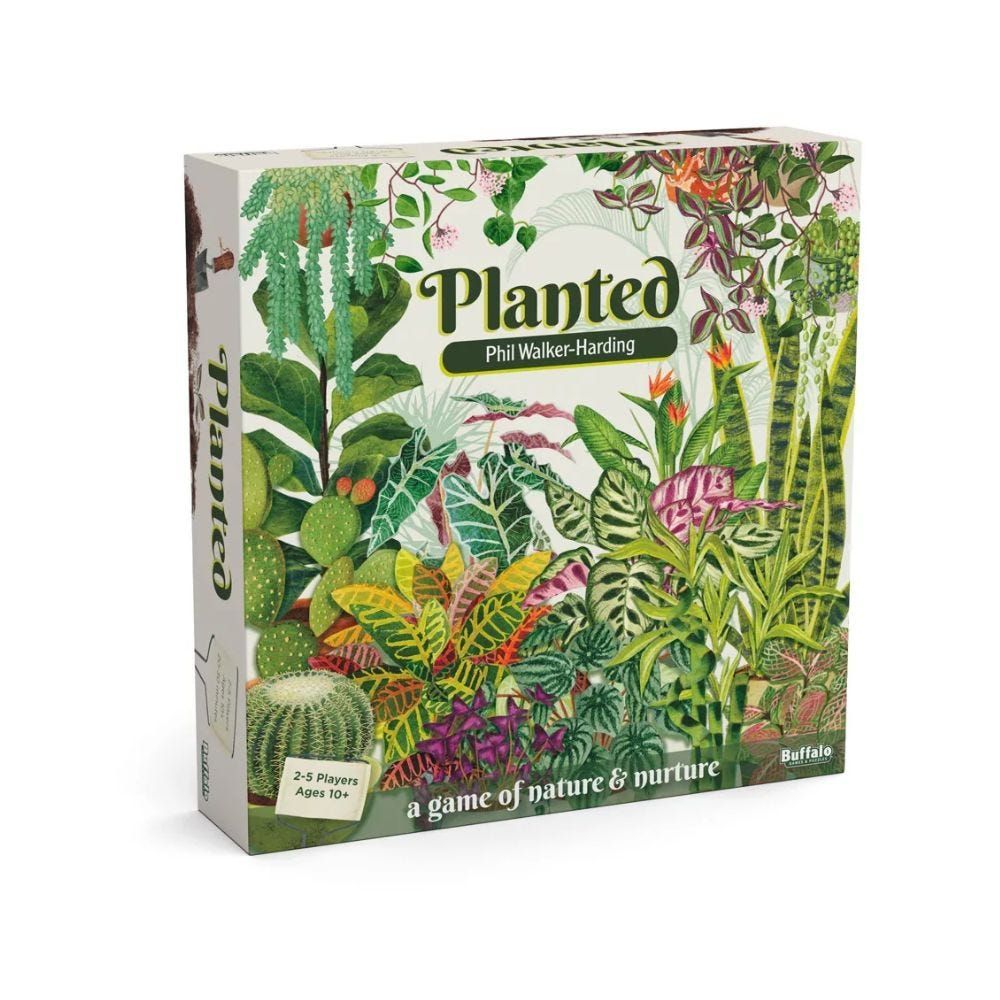
'Planted: A Game of Nature & Nurture'
- Design of everything is gorgeous
- Easy to learn
- Gameplay is fun and quick
- Tons of unique ways to replay the game
- Some may find it boring and repetitive

